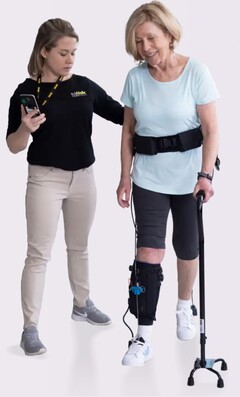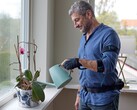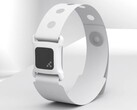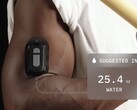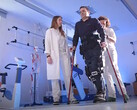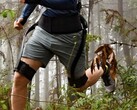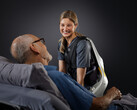Hungarian researchers at the University of Pécs have shown the Lifeward ReStore Exo-Suit helps stroke patients recover more of their walking ability than traditional rehabilitation. The exoskeleton consists of a calf wrap on the lower leg that is connected to a motion sensor and insole mount on each foot. The Exo-Suit uses two cables connected to the insole to flex the foot up or down at the ankle in time with each step, assisting the patient with regaining their ability to walk normally.
Stroke often damages the brain and its ability to control muscles. For many stroke patients, muscle control of the arms and legs are affected. Walking and standing requires many leg muscles to work together, but when control over these muscles is damaged, problems occur.
A simple step forward becomes dangerous because the front of the foot is not lifted properly at the beginning of each step, and the heel does not land first at the end. Traditional rehabilitation is mostly limited to maintaining patient balance, without positioning the foot correctly every step.
The researchers compared the ability of the ReStore against traditional rehabilitation among two groups of stroke patients approximately 65 years old with similar health characteristics. Patient performance was evaluated without using the exoskeleton five days, fifteen days, and five weeks after rehabilitation begun.
Exo-Suit therapy consisted of 10 minutes walking a hallway, 10 minutes walking a slalom course, and 6 minutes repeating walking quickly then slowly. Traditional therapy consisted of a half hour of seated exercise, then a half hour of walking and balancing exercises. At the end of five weeks, the participants who used the Lifeward Exo-Suit were able to walk faster (0.36 f/s or 0.11 m/s) and further (364 feet or 111 meters) than those who did not. Also, exoskeleton patients were more stable standing.
Readers who haven’t had a stroke might want to exercise frequently (using a gym like this at Amazon) and adopt a healthy diet (detailed in this book at Amazon).




